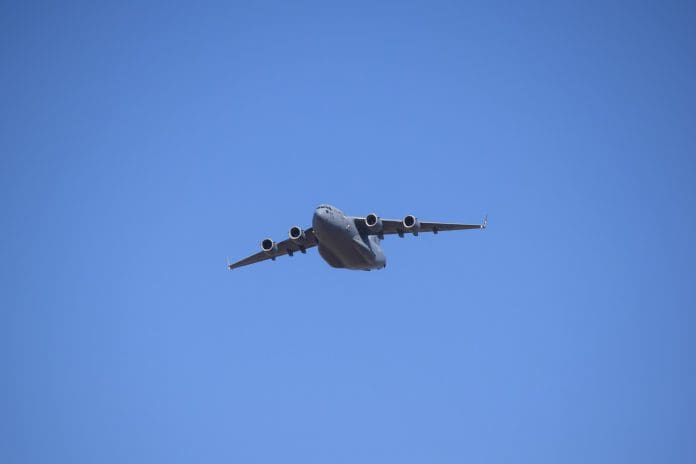This post is also available in:
 עברית (Hebrew)
עברית (Hebrew)
The US Air Force issued a call for the development of onboard defensive systems for mobility aircraft to counter small drones, especially tankers, and transport aircraft that are slow and large and therefore more susceptible to enemy attacks.
Current mobility aircraft defense consists of flares and laser jammers against missile threats, but recent developments in drone warfare and civilian drone use have prompted the Air Force to consider additional defenses against such threats.
According to Interesting Engineering, Air Mobility Command published a concept of operations (CONOPS) alongside the request for information (RFI), noting that in the search to defend mobility aircraft, they may rely on robust base defenses. The CONOPS outlines AMC’s need to defend against both hostile and non-threatening drones in the vicinity, and emphasizes the importance of industry solutions that provide enhanced situational awareness of drone presence and require minimal crew intervention for neutralization or avoidance.
The RFI and CONOPS, apart from highlighting the distinct challenges posed by operating in civilian environments, indicate the Air Force’s interest in both kinetic and non-kinetic options, including systems that can identify and not necessarily destroy UAS. The document calls for solutions that are also capable of distinguishing threats in commercial settings – for example, systems cannot employ broad GPS jamming or kinetic kill capabilities if the Vice President’s plane is stationed at Frankfurt International Airport, as is explained in the document.
In addition to airborne defenses, the document highlights the need for compact ground-based counter-drone tools that do not displace cargo and can be quickly rolled on and off the aircraft with accessible ramps (aircraft that do not have ramps would require hand-carried and rapidly deployable C-UAS systems, or alternatively, have operable equipment onboard).
The CONOPS document highlights the pervasive presence and increasing likelihood of encountering small unmanned aerial systems and drones, especially when considering today’s rapid development of small, inexpensive drones.


























